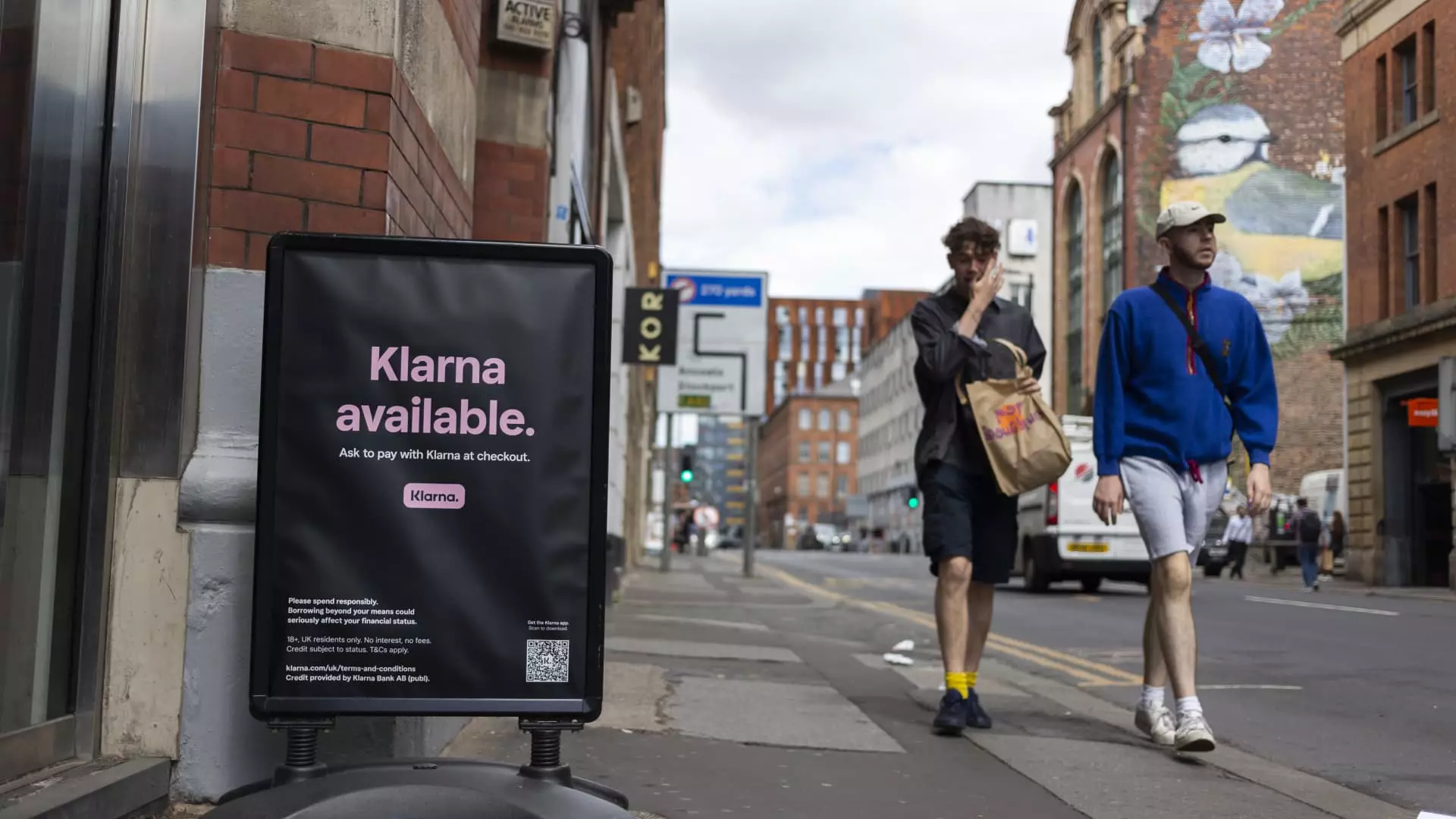Klarna, the Swedish fintech sensation known for its buy now, pay later (BNPL) services, is gearing up to go public on the New York Stock Exchange under the ticker symbol “KLAR.” This marks a pivotal moment not just for the company but for the entire European tech landscape, which has seen numerous homegrown giants slip through the cracks in favor of American markets. While CEO Sebastian Siemiatkowski has hinted at the U.S. IPO for years, it’s ironic that Euro-centric stock exchanges—often viewed as harbors for innovation—are losing ground to their American counterparts. The circumstances surrounding Klarna’s impending public listing accentuate a broader trend of disillusionment with European markets; they’re faltering under a barrage of regulations and an unyielding fight for visibility.
From Stardom to Scarcity: The Rollercoaster Ride
Klarna’s trajectory paints a portrait of both adversity and resilience. Initially celebrated as a pandemic-era success story with a dizzying valuation of $46 billion during a SoftBank funding round, the company faced a staggering 85% valuation drop by 2022, leaving it relegated to a mere $6.7 billion. What’s fascinating, but deeply unsettling, is how quickly the winds can change in the tech sector. While the firm is now bouncing back with a projected valuation of around $15 billion, bolstered by a return to profitability, it forces us to confront reality: major financial institutions—including Klarna—often live as if they can operate above the tumultuous tides of market volatility. Can consumers truly feel secure in the hands of a company that has experienced such dramatic ups and downs?
Rebuilding Amid Market Uncertainty
Klarna’s latest financial report showcases mixed signals. With a 24% revenue boost, reaching $2.8 billion, and an adjusted operating profit increase from a $49 million loss to an $181 million gain, one might be tempted to label it a comeback. Yet the heavier narrative is one of uncertainty. The company still reported an operating loss of $121 million, hinting that despite some positive numbers, a very real fragility looms. The tech landscape is still rocky, with the Nasdaq recently concluding its fourth consecutive week in the red. It begs the question: Are investors simply optimistic about a brand that has proven its ability to rebound—or are they ignoring the underlying instability that contributed to its initial downturn? This sets the stage for a precarious investment climate.
Competing in a Crowded Marketplace
As Klarna prepares to enter the public arena, it must contend not just with the persistent specter of consumer skepticism but also with an increasingly crowded financial landscape. It’s not just other BNPL providers like Affirm and Afterpay that Klarna faces; it’s the immense power of traditional credit card networks such as Visa and Mastercard. As Siemiatkowski himself noted, there’s a battle brewing over the “horrendous credit card fees” faced by American consumers. This challenge could compel Klarna to compete on pricing, yet it raises ethical questions: How low can they go without sacrificing service quality? Moreover, with the bar continuously raised by FinTech pioneers, the necessity to innovate—and the cost of staying relevant—will only escalate in the ensuing years.
Looming Regulatory Challenges
The path to a U.S. IPO is fraught with regulatory hurdles, and Klarna’s ambition to expand its licensing in the U.S. while simultaneously eyeing a massive $1 billion investment is nothing short of audacious. While this funding may bolster its operational capabilities, it also begs the question of long-term viability. Klarna must ensure that it doesn’t get lost in the regulatory maze. The current consumer discontent over traditional banking fees may provide an opening, but it can only mitigate risk so long—if it fails to keep up with compliance requirements and innovative product offerings, it may soon find itself in a bear trap rather than on a flourishing runway.
Consumer Sentiment: A Double-Edged Sword
The recent drop in consumer confidence to a mere 57.9 raises another layer of complexity. These behavioral indicators suggest that even if Klarna manages to rebound and attract new investors, they will be contending with a consumer base that feels uncertain and wary. The pressure will be on Klarna to not just deliver attractive financial products but also to garner trust in a time when every dollar spent is carefully scrutinized. Can a company that has experienced such significant and rapid changes in valuation offer enough value to the average consumer while standing firm against their inherent distrust?
Klarna’s upcoming IPO could very well be a pivotal moment—not just for the company itself, but for the very nature of consumer finance and its interconnected relationship with market sentiment, regulatory landscapes, and the fierce competition embedded within. While the narrative holds material promise, a cloud of skepticism continues to loom, urging both consumers and investors to tread carefully in this volatile landscape.

